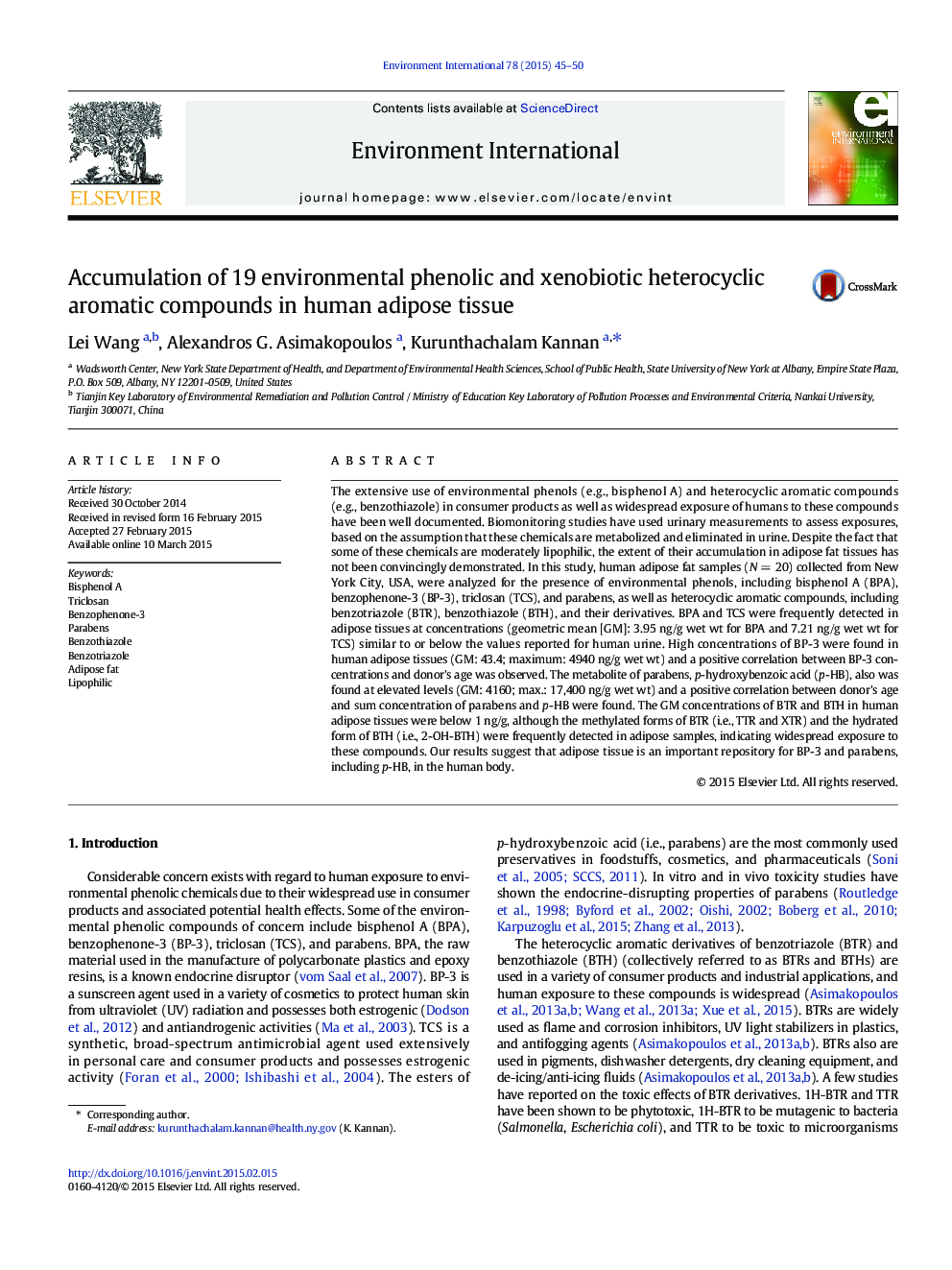| کد مقاله | کد نشریه | سال انتشار | مقاله انگلیسی | نسخه تمام متن |
|---|---|---|---|---|
| 4422723 | 1619050 | 2015 | 6 صفحه PDF | دانلود رایگان |
• 19 environmental phenols and heterocyclic aromatics were analyzed in human adipose.
• High concentrations of p-hydroxy benzoic acid and benzophenone-3 were found.
• Concentrations of BP-3 and some parabens increased with age of individuals.
• Concentrations some phenols and aromatics were higher in adipose than in urine.
The extensive use of environmental phenols (e.g., bisphenol A) and heterocyclic aromatic compounds (e.g., benzothiazole) in consumer products as well as widespread exposure of humans to these compounds have been well documented. Biomonitoring studies have used urinary measurements to assess exposures, based on the assumption that these chemicals are metabolized and eliminated in urine. Despite the fact that some of these chemicals are moderately lipophilic, the extent of their accumulation in adipose fat tissues has not been convincingly demonstrated. In this study, human adipose fat samples (N = 20) collected from New York City, USA, were analyzed for the presence of environmental phenols, including bisphenol A (BPA), benzophenone-3 (BP-3), triclosan (TCS), and parabens, as well as heterocyclic aromatic compounds, including benzotriazole (BTR), benzothiazole (BTH), and their derivatives. BPA and TCS were frequently detected in adipose tissues at concentrations (geometric mean [GM]: 3.95 ng/g wet wt for BPA and 7.21 ng/g wet wt for TCS) similar to or below the values reported for human urine. High concentrations of BP-3 were found in human adipose tissues (GM: 43.4; maximum: 4940 ng/g wet wt) and a positive correlation between BP-3 concentrations and donor's age was observed. The metabolite of parabens, p-hydroxybenzoic acid (p-HB), also was found at elevated levels (GM: 4160; max.: 17,400 ng/g wet wt) and a positive correlation between donor's age and sum concentration of parabens and p-HB were found. The GM concentrations of BTR and BTH in human adipose tissues were below 1 ng/g, although the methylated forms of BTR (i.e., TTR and XTR) and the hydrated form of BTH (i.e., 2-OH-BTH) were frequently detected in adipose samples, indicating widespread exposure to these compounds. Our results suggest that adipose tissue is an important repository for BP-3 and parabens, including p-HB, in the human body.
Figure optionsDownload as PowerPoint slide
Journal: Environment International - Volume 78, May 2015, Pages 45–50
